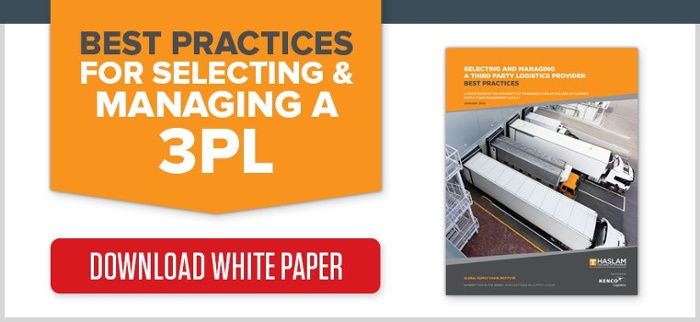
It’s a given that collaboration, visibility and agility make supply chains more efficient and effective;
this is especially true for a key component of the chain, warehousing and distribution.
But what stops collaboration? One answer is a 3PL contract. During a site visit to a 3PL that warehoused spare parts, I saw about eight people servicing a facility that on average had less than 75 orders for spare parts per day. When asked why they needed all the resources, the manager responded, “That is what the client company requires per our statement of work – so I have staffing at that level to meet the contract requirements.” That’s the outsourcing paradox in a nutshell!
On another site visit, I asked the general manager of a 3PL what a large area full of “orange tagged” pallets was for. She replied, “That’s some of our customer’s old inventory I need to move to an outside storage facility.” Digging further, I found out it was product that was well over five years old — and at the rate it was moving would last 123 years! I asked why they didn’t work with the customer to scrap the material. The response was, “Why? I charge $18 a pallet per month to store it. I’d lose revenue if I did that!”
Is the supplier to blame in either case? I could definitely argue “no,” since they are doing what is in the contract. The real questions should be, “Why do we write transaction contracts that are laden with perverse incentives?” and, “How do we change this paradigm?”
First – you have to start by not buying a transaction (e.g., pallet stored, miles traveled, spare parts shipped), but instead use more progressive selecting a 3PL selection methods like a Request for Solution or Request for Partner as outlined in the recent white paper, “Unpacking Competitive Bidding Methods: The Essential ABCs of the Various RFX Methods.”
For those that are truly seeking a supplier that can deliver business outcomes and not just store a pallet of product, consider shifting to a Vested business model that architects 3PL contracts using a relational contract and outcome-based economic model designed to align with mutually defined desired performance outcomes.
In short, the Vested model buys outcomes, not individual transactions.
And how do you craft a Vested agreement? By following five simple rules.
Rule 1: Focus on Outcomes, not Transactions. Shift the mindset from a focus on specific transactions to desired outcomes – instead of buying transactions, buy outcomes, which can include targets for availability, reliability, revenue generation, employee or customer satisfaction and the like.
Rule 2: Focus on the “What,” Not the “How.” If a partnership is truly outcome-based it can no longer have a multiplicity of Service Level Agreements (SLAs) that the buyer is micromanaging. The outsource provider has won the contract because it has the expertise that the buyer lacks. Therefore the buyer must trust the supplier to solve problems.
Rule 3: Agree on Clearly Defined and Measurable Outcomes. Make sure everyone is clear and on the same page about their desired outcomes. Ideally, use no more than about five high-level metrics. All parties need to collaboratively spend time to establish explicit definitions for how relationship success is measured.
Rule 4: Pricing Model Incentives that Optimize the Business. Vested does not guarantee higher profits for service providers, they are taking a calculated risk. But it does provide them with the tools, autonomy and authority to make strategic investments in processes that can generate a greater ROI and value over time, perhaps more than a conventional cost-plus or fixed price contract might produce over the same period.
Rule 5: Governance Structure Should Provide Insight, Not Merely Oversight. A flexible and credible governance framework enables all the rules to work in sync. The structure governing an outsource agreement or business relationship should instill transparency and trust about how operations are developing and improving.



